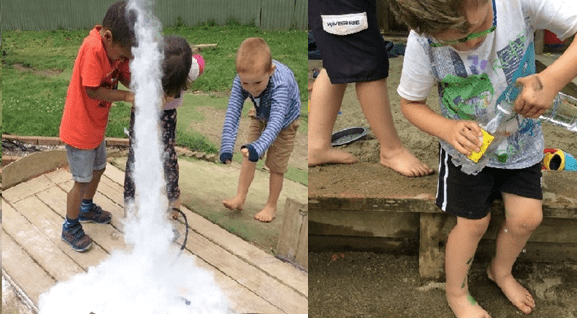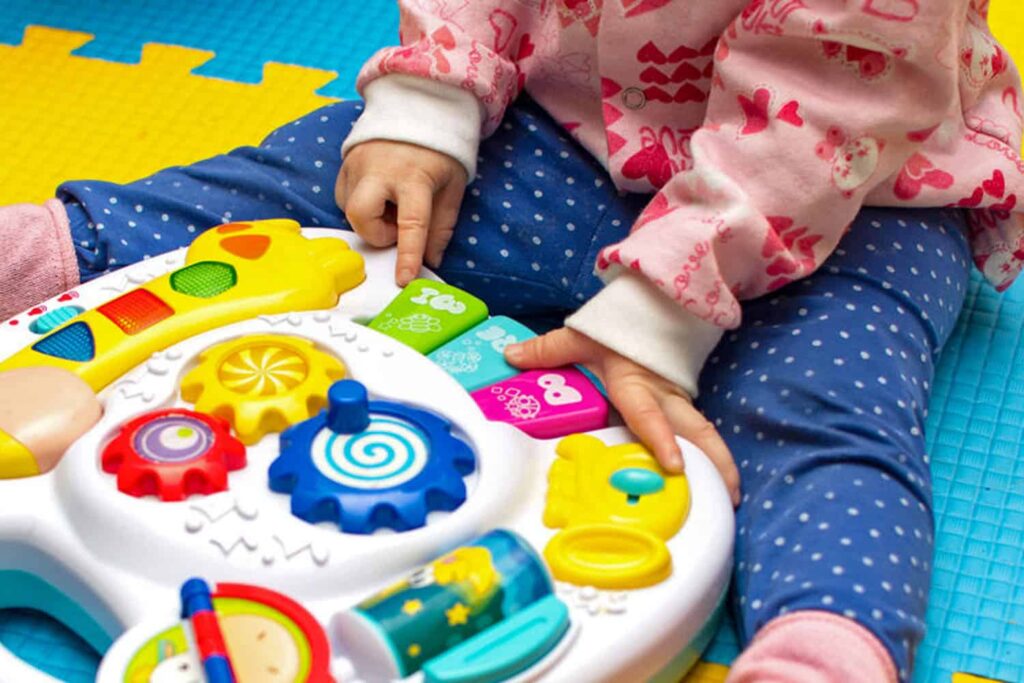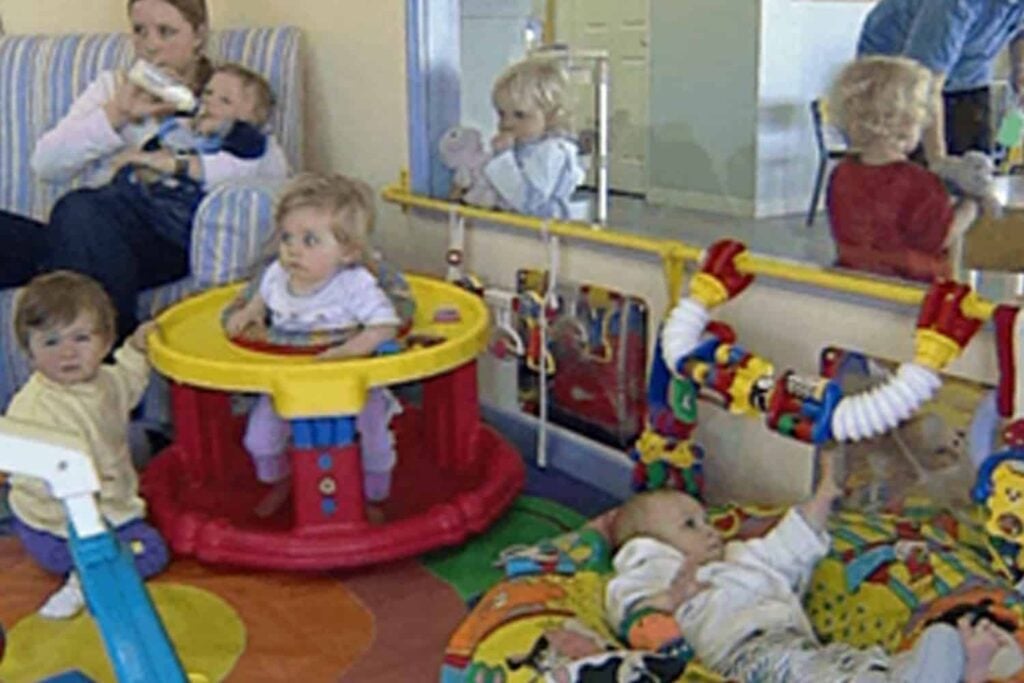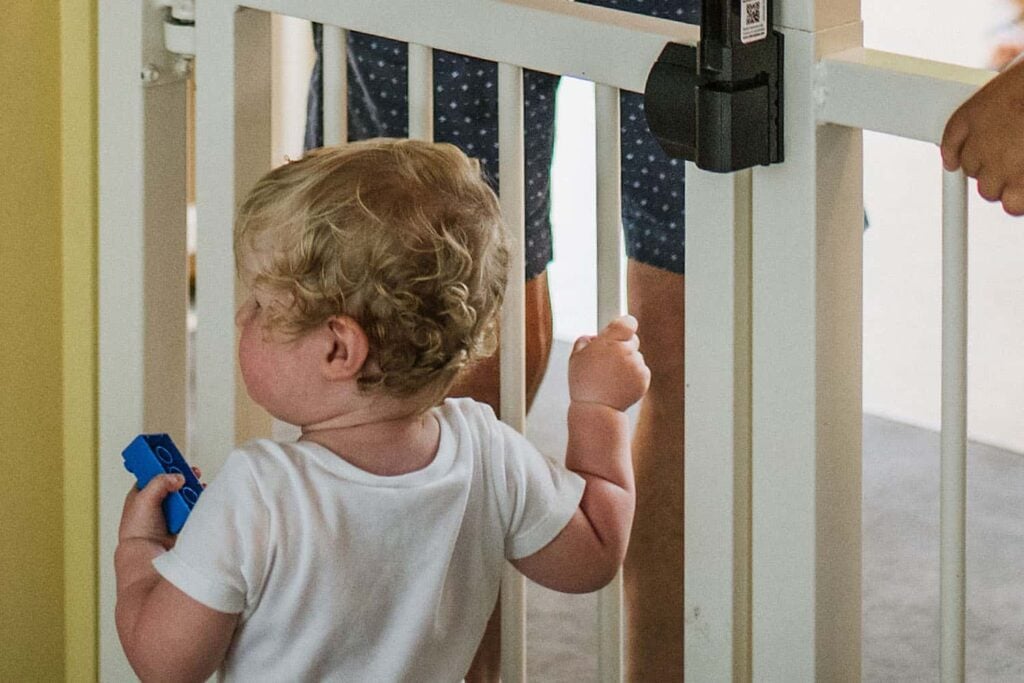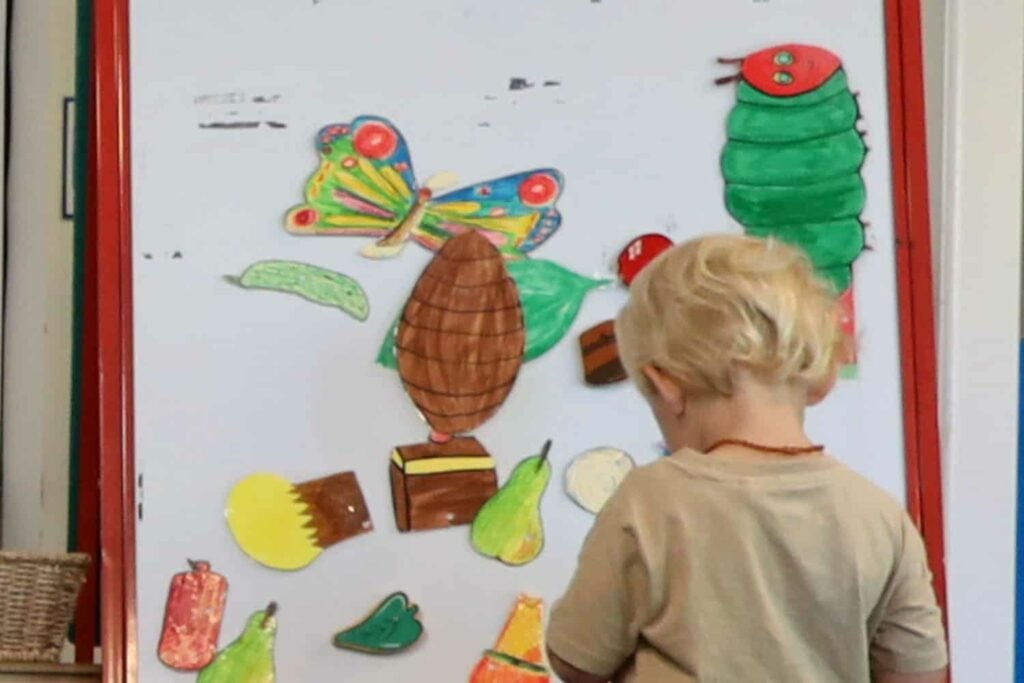Teaching Staff Endorsement of ECE Service Quality.
Introduction
It goes without saying that the early childhood sector is a major part of NZ’s infrastructure – it’s essential to our economy. There is high level of social acceptability for the use of childcare and demand for it by parents and caregivers.
In 2017 as many as 96.8 percent of all children starting school had participated in early childhood education. The latest figures on enrolment in ECE provided by the Ministry of Education show that in 2015 there were 198,887 children in ECE. The majority of enrolments were in childcare centres (63%). Kindergartens accounted for 15.6 percent, home-based 10 percent, Playcentre 6 percent and kōhanga reo 4.5 percent of all enrolments. Average weekly hours of child attendance were 23.8 hours in home-based, 22 hours in childcare centres, 15.7 in kindergarten, and 4.5 hours in Playcentre.
In regard to government spending on ECE the Ministry of Education states that “the proportion of public education expenditure devoted to ECE more than doubled between 2002 and 2015, from 6.4% in 2002 to 14.0% in 2015. This growth reflects successive governments’ increased investment in this part of the education sector, as well as population changes. As a proportion of GDP, overall public expenditure devoted to ECE has also more than doubled since 2002, having increased from 0.33% in 2002 to 0.75% in 2015”.
Government policy for the last decade has focused on driving up the number of children attending ECE and the length of time they attend. Promoting participation is continuing to be a policy focus under the new government. The Ministry of Education is also continuing to actively encourage the establishment of new services with large child numbers and support existing services to extend numbers. (see another article about this)
But quality matters alongside participation. Here in New Zealand and overseas the importance of early childcare and education being of good quality has been well documented by researchers using a range of different methodologies over many decades.
Participation in early childhood education can have harmful effects on infant and young children’s emotional and physical health, brain development, and behaviour especially if it is not provided well, and higher quality is associated with better outcomes for children.
International research suggests 12 – 15 hours a week to be optimal for children to gain from their preschool experience. No NZ research shows a significant causal relationship between increased hours beyond that provided of a part-day service and improved outcomes for children. Lengthening the hours increases the risk to children of attachment issues, behavioural problems, and anxiety. Therefore it’s even more important that quality is good when children are attending longer hours.
About the Survey and the respondents
This report presents data relating to a question on ECE service quality asked as part of our 2017 ECE Quality and Employment Survey.
The question is: “Hypothetically, if you have or had your own children, would you be happy to enrol them at the service where you work or at a comparable one (i.e. at any service of similar quality)?”
A call through ECE sector newsletters and social media was put out across the sector for participants. In contrast to the earlier survey, this one is broadened from childcare and kindergarten teachers to also include the views of centre managers, and people employed as teaching staff in home-based ECE and parent-led ECE services.
Nine hundred people working in early childhood education who were not owners or operators responded and completed the online survey. Out of the 900, 79 percent were employed in teaching positions, 12 percent were employed as managers or members of senior management, 5 percent were teacher relievers, and 4 percent were others such as student teachers.
As was expected, most respondents were female (95%) and between 25 to 44 years of age (56%). The largest proportion of respondents came from childcare centres; including daycare and preschools, private kindergartens and centres providing different philosophical approaches such as Montessori and Pikler (76%). The next largest groups of respondents came from kindergartens operating under the management of a recognised public kindergarten association (16%) and home-based ECE services (6%). One percent of respondents came from Playcentre and very small numbers from hospital-based, playgroup and kohanga reo services.
The regional distribution of respondents is shown below
| Northland | 4.89% (44) | Taranaki | 1.78% (16) |
| Auckland | 27.44% (247) | Manawatu – Wanganui | 5.89% (53) |
| Waikato | 11.56% (104) | Wellington | 10.33% (93) |
| Bay of Plenty | 6.56% (59) | Marlborough, Nelson and Tasman | 2.11% (19) |
| Gisborne | 1.11% (10) | Canterbury and West Coast | 13.44% (121) |
| Hawke’s Bay- Wairarapa | 5.89% (53) | Otago and Southland | 9.00% (81) |
Most respondents were fully qualified teachers and held a teaching practising certificate or were working toward full certification (90%). Possibly a lower proportion of those not qualified for teaching participated in the survey than could be expected, however right now the Ministry of Education doesn’t actually know the proportion nationally of qualified and unqualified staff in ECE.
“The Ministry has identified data quality issues relating to the characteristics of teaching staff. Since March we have been working directly with ECE Student Management System providers to resolve this issue. Despite this, the issue remains unresolved. The Ministry is working towards a solution for the data quality issues. At this stage we are unable to provide data on the ethnicity, gender and qualifications of teaching staff”. (Education Counts website annual ECE summary reports, comment published under “data quality issues” and retrieved on 12 December 2017).
Results
Main finding
While 73 percent of 900 people working in ECE would endorse quality, 27 percent would not.
Further analysis can tell us where problems in quality are perceived to lay, what these are, and what improvements the Ministry of Education and ECE providers could make to radically reduce the figure of 27 percent.
Concerns
Variability in quality appears to be greatest among childcare centres compared to other types of services. While many of the respondents from childcare centres wrote very highly of the quality provided by their centre there were also many who did not.
Only 68 percent of respondents from childcare centres would endorse quality. In contrast to this, 88 percent of respondents from kindergartens, 86 percent of respondents from home-based ECE and all respondents from playcentres would endorse quality.
See the grid below for an overview of the kind of comments respondents made (note that this is a small sample of the comments received – a summary for the purpose of illustration).
|
Type of service respondent was from |
Some comments made by respondents who would be happy to enrol their child at their service or at another one comparable to it |
Some comments made by respondents who would not be happy to enrol their child at their service or at another comparable to it |
|
Childcare centre |
If there was a centre like ours around in our community I would enrol them. We have above average staff ratios, are paid according to the collective agreement and have a great parent committee. Totally, we have the best group size, ratios, continuity of teaching team and in my opinion the best approach in our community. Magical teaching by teachers and in a fabulous quiet rural environment. The teachers are fantastic and united it is just the management that make it hard. Three teachers have left and four more to come. My daughter attends with me twice a week. I doubt I would choose it otherwise. The outside space is amazing but professionally we are lacking in direction and that impacts on planning etc which ultimately impacts on the learning. I have my child at my centre but that’s because I get half priced care. Sometimes I don’t like them being there but I feel as though I can watch and protect them while I’m there so at least they are getting quality care. Yes. We are working on creating a calm and inviting environment for our babies which is a work in progress…we are implementing relaxing music, lavender foot baths and yoga so they feel relaxed and feel at home. My children both attended when staffing levels were much higher which to me means better quality. Still a good centre but not enough staff. Yes but not attending full time. The noise levels are too loud and I would prefer to keep them home on rainy days so that they can play in the rain if they want to. I have my child enrolled at my centre but in the nursery. It is a small nursery with 6-10 children unlike my room that has 40. I like the nursery but worry for when my child turns two and transitions over. Yes but I wouldn’t rely on them for education. Just care. Due to the bullying I have experienced in my room I would not enrol them in my room as the leader sometimes displays power trips. I would enrol in a similar quality centre from the point of education etc. I am due to have a child soon and will return to work after 6 months. I am more than happy to have my 6 month old in care with my colleagues due to excellent ratios, trained staff and the high involvement of the owner with the nursery and babies, especially when they’re unsettled. |
Before working in childcare I would have considered it… now never. Hell no! I want my children alive and I want the people educating my child to be resourced, respected, valued, qualified and experienced. I would only consider places with smaller group sizes (under 20) and with larger indoor and outdoor spaces. After only 3 years of teaching I have just resigned from the centre. My conscience would not let me stay part of a system that is akin to factory farming for children. I’d enrol them in home-based care instead, if I could find a good educator, or move to a town with a better centre if I could. This is the best way to judge quality! I often consider I would say no but I probably wouldn’t have that choice to make. Due to maternity leave restrictions and financial restraint I have no choice but to send my child to my centre. Our under 3 room is busy, loud, with staff stretched. Children in our type of centre are often not typically developing. No way. There is no quality care let alone education happening. Sometimes staff are left with too many crying babies. Teachers are amazing but parent company doesn’t give a crap about anything except money. Not enough teachers to build relationships with the kids. Because, when a teacher is on their own with under-twos and when they go to change a child in the change room inside the classroom, the teacher can’t see the children. I have chosen not to enrol my 7 month old as we are licensed for 20 children in the nursery which I feel is too big an environment for him at this age. I fear he will be exposed to too many illnesses and with that number of children it is too difficult to build the strong attachment relationships that are so important at such a young age. It’s run down inside, little to no grass outside, and not enough teachers for the over –twos children. I don’t believe the teachers are happy in their work so therefore they would not be at 100% to care for my children. A small inside space. I personally hate bunk cots (cages). The entrance ramp is included in children’s allocated play space measurement. The fence to the older children’s play area has now been climbed and the fall area is onto a concrete path. Safety concerns due to lack of support for children with challenging behaviours. Unqualified staff, loud noise level, other teacher practises and beliefs differ to mine. |
|
Kindergarten under a free kindergarten association |
Kindergartens employ qualified teachers and for me it means that I would trust a qualified person with my child as they know what they are doing. The environment and staff are welcoming, respectful, honest and caring. They embrace the essence of the child and nurture it with aroha. The resources at all kindergartens I have been in have been great compared to the previous for profit or profit for purpose centres I have worked in. Yes but only if kindergarten were for a four hour morning, not a six hour day. Yes, but I would not consider it if I saw a child being attacked during a visit. We’ve had parents wanting to pull their children out for that reason. |
I would choose a smaller centre with less children and a 1-7 ratio for over two’s. I would want all teachers to be passionate about working with ALL children and their families. I worry about the effects of diverse behaviours on the emotional well-being of the children who are not ‘priority learners’. Safety concerns due to lack of support for children with challenging behaviours. Too many children arriving with too many anti-social behaviours. My grandchildren would be very unsafe. Teachers under too much stress caused by management. There’s been a change in direction from quality ECE to bums on seats |
|
Home-based ECE |
My child has been in a centre but after doing homebased I would rather her have gone to homebased with the right educator. I love that the child to adult ratio is never compromised. I would choose the homebased educator because I know what quality looks like. |
If she had a good home educator or nanny that would be ideal but I feel there are risks in home based ECE if you get a dodgy person who looks good on paper but is not good when left alone with your children. I love home-based but I wouldn’t go through a company like my current company |
|
Playcentre |
We have a ratio of at least 1:3 but more often 1:2 therefore excellent supervision. Playcentre is a great place to be for parents and children. |
Respondents’ comments when answering the question suggest that when children are attending longer hours or at an earlier age and with less involvement in the ECE service by their parents, resources and physical conditions can become more of an issue.
In home-based there wasn’t concern about ratios or the number of children, but relationships and having the ‘right’ educator featured in the comments along with the quality of the management or agency operating the service.
In kindergarten there was little concern about teacher quality and physical resources but there was concern about poor teacher-child ratios, aggressive children and the safety of other children, the ability of kindergartens to provide for the learning of all children, and changing direction in kindergarten operation.
In childcare centres the concerns included nearly the entire above, plus: child numbers/ over-crowding, noise levels, children’s emotional wellbeing, the physical environment and resources, teacher stress, unqualified teachers, and educational capacity for children’s learning.
What would likely help to turn the result around
For the purpose of identifying if there are any specific improvements ECE operators and the Ministry of Education could make to radically reduce this 27 percent, respondents’ answers to the question were compared to other data collected as part of the larger 2017 Employment survey.
Nine statistically significant factors related to whether quality was endorsed were identified. Six of these are largely ones that service operators manage or have influence over: (1) the environment is safe for children, (2) time is allowed for teachers/educators to develop individual relationships with children, (3) staff are not working under highly stressful conditions, (4) staff are not bullied, (5) ample child non-contact time is allowed for doing things such as writing up child assessments, and (6) staff are adequately remunerated for their work.
- Eighty-eight percent of respondents with no concerns for child safety and 60 percent with minor concerns endorsed their service’s quality as opposed to 19 percent who held serious concerns
- Eighty-two percent of respondents who had time to develop individual relationships with children also endorsed their service’s quality as opposed to 46 percent who did not have time.
- Eighty-two percent who reported experiencing stress moderately often and 97 percent not at all often endorsed their service’s quality as opposed to only 42 percent who were stressed extremely often.
- Eighty-four percent who had not recently experienced bullying endorsed their service’s quality as opposed to only 60 percent who reported being bullied within the last year.
- Ninety percent of those who had 5 or more hours of non-contact time a week endorsed their service’s quality, decreasing to 87 percent of those with 4 hours, and 60 percent no hours of non-contact time.
- Eighty-five percent who endorsed quality perceived they were paid extremely well in contrast to only 60 percent who perceived they were poorly paid.
Factors related to the perceived quality of ECE services that the ministry have influence over and that are within the power of the government to address are: (1) the number of children per service, (2) teacher-child ratios, and (3) the proportion of community-owned to private and corporate services. These are things that the ministry could be focused on improving and advising the government on. Improving these factors could result in a radical rise in approval of ECE service quality by those working in ECE.
- Eighty-six percent of respondents in centres with less than 30 children endorsed quality compared to only 41 percent of respondents in centres with more than 100 children.
- Eighty-five percent of respondents in community-based services endorsed quality compared to only 65 percent in private and commercially operated services.
- Eighty-three percent of respondents in services with above minimum staffing ratios endorsed quality compared to 68 percent in services that operated at legal ratios and 56 percent in services that operated below legal requirements.
Summary and recommendations on endorsement of ECE service quality
Over the past two years there has been no improvement in the perceived quality of early childhood education.
Based on the latest survey results the best ways to improve quality would include:
- ECE providers all being open to the concerns that their teachers and managers may have and involving staff in decision-making for quality improvement.
- The ministry beginning to monitor how well services actually meet staffing requirements in daily practice (not only as reported by service operators).
- The ministry actively supporting centres to have optimal instead of maximum numbers of children in terms of what is best for children’s wellbeing and learning.
- An emphasis on achieving a greater proportion of community-owned and operated services.
Ultimately, it comes down to two things:
- How ECE centre providers duplicate the best attributes of home-care alongside the things that are important for quality in centres when parents cannot be present, and if this can be achieved when operating on a commercial basis, and
- The attention the Ministry of Education gives to the quality of children’s experience and how it supports ECE operators to do better, and if this can be achieved on a daily basis (not just on paper for each service and not just on the day the Education Review Office reviewer visits every 3 or 4 years).



